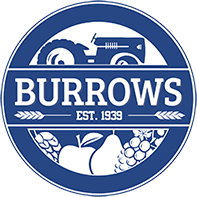Preparing Your Land and Equipment for Spring
 A great harvest starts with great preparation. The long winter months will have taken their toll on your equipment and land, leaving them not quite ready for spring just yet. But follow the below guide and you'll be able to optimize your land and farm equipment for a bountiful harvest! If you have any questions or want to explore tractors for sale, visit Burrows Tractor. We carry a range of models, including New Holland tractors. Our dealership is based in Yakima and Wenatchee, Washington, as well as North Plains, Oregon.
A great harvest starts with great preparation. The long winter months will have taken their toll on your equipment and land, leaving them not quite ready for spring just yet. But follow the below guide and you'll be able to optimize your land and farm equipment for a bountiful harvest! If you have any questions or want to explore tractors for sale, visit Burrows Tractor. We carry a range of models, including New Holland tractors. Our dealership is based in Yakima and Wenatchee, Washington, as well as North Plains, Oregon.
1. Get Your Soil Tested
Learning about the state of your soil will help you make informed decisions to maximize your harvest and protect your crops. Take some soil samples and get a pH test done. You can either purchase a kit and do the tests yourself or send the soil samples to a professional lab.
2. Inspect Your Tractor
When your tractor sits in storage for an extended period of time, various issues can creep up. Inspecting your tractor helps you catch these issues early on, allowing you to get them addressed before you need to use your tractor.
The inspection process may need to start with washing your tractor. All that time in storage could have left a layer of grime, which can make it harder for you to spot problems and can also cause damage to your tractor's exterior if left on for too long.
Next, look over your tractor for any red flags. Test the various parts from the lights to the brakes. Keep in mind that small problems can snowball into other issues or larger issues, so it's wise (and more cost-effective) to get problems addressed right away.
3. Handle Any Tractor Maintenance
A little proactive tractor maintenance can help improve its performance and extend its lifespan. Add lubrication to the moving parts on your tractor. Inspect the fluid levels for quality and top off anything that is low. Make sure the battery did not drain during storage. It's also wise to consult the tractor's owner's manual to see if there are any specific tasks you need to do or specific products to use or not use.
4. Handle Soil Issues
Your soil may not be ready for planting just yet. The ground could be too tough, so you need to break it up. The area could be suffering from a weed infestation, so you may need to tackle this problem. Get your soil issues fixed before planting crops.
5. Select Your Crops
The final step is to pick what you want to plant. Experienced farmers likely already know exactly what to plant. New farmers will want to research topics such as the cost of planting various crops and what will grow best in their area.
Don't forget to select fertilizer to go with your crops. Healthy soil needs plenty of nutrients, such as potassium, nitrogen, and phosphorus. Get a fertilizer well-suited for your crops and soil to help increase the chances of a great harvest.
We hope this guide was helpful! If you want more preparation strategies or want to shop tractors for sale, head over to Burrows Tractor, located in Washington and Oregon. We offer many different models, such as New Holland tractors. Our friendly staff is happy to assist you in finding the right model for your budget and needs, so stop by and visit our dealership today! We proudly serve those in Kennewick, Ellensburg, and Richland, WA, and Portland, OR.
